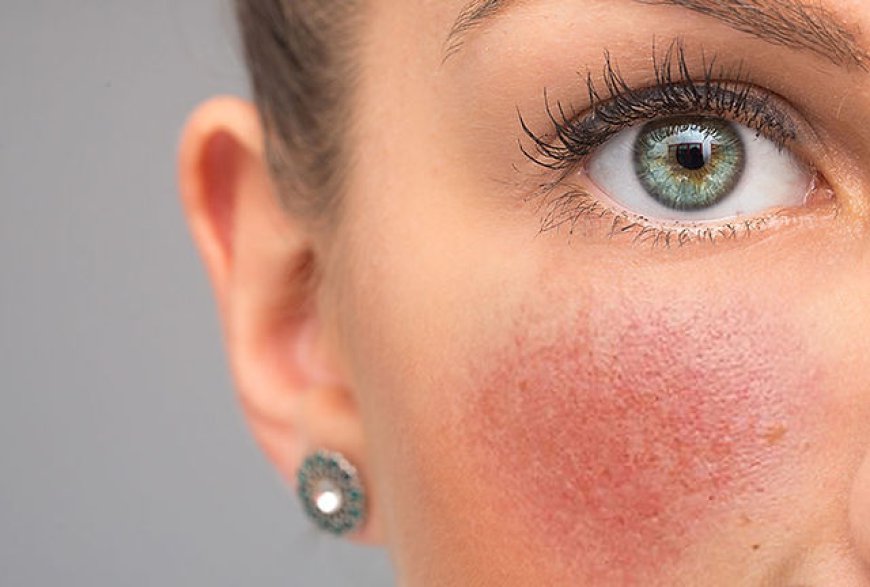osacea is a common skin condition that affects millions of people worldwide. Characterized by redness, visible blood vessels, and sometimes acne-like bumps, rosacea can be both physically uncomfortable and emotionally distressing. However, modern treatments offer effective ways to manage and reduce the symptoms of rosacea, helping individuals achieve smooth and clear skin. With the right rosacea treatment, you can regain your confidence and enjoy a complexion free from redness and irritation.
Understanding Rosacea
Before diving into the various treatments available, it’s essential to understand what Rosacea Treatment in Dubai rosacea is and how it manifests. Rosacea typically appears on the face, particularly on the cheeks, nose, forehead, and chin. The condition often begins with a tendency to blush or flush more easily than others. Over time, this redness can become more persistent, and small, red, pus-filled bumps may appear. In severe cases, the skin on the nose may thicken, leading to a bulbous appearance known as rhinophyma.
Rosacea is a chronic condition, meaning it can last for years or even a lifetime. The exact cause of rosacea is still unknown, but factors such as genetics, environmental triggers, and a malfunctioning immune system are believed to play a role. While there is no cure for rosacea, effective treatments can control and reduce its symptoms, allowing individuals to maintain smooth, clear skin.
Types of Rosacea Treatment
There are several treatment options available for managing rosacea, ranging from topical medications to advanced laser therapies. The choice of treatment depends on the severity of the condition and the specific symptoms an individual is experiencing.
1. Topical Medications
Topical medications are often the first line of treatment for rosacea. These creams, gels, or lotions are applied directly to the affected skin to reduce redness, inflammation, and acne-like bumps. Common ingredients in topical rosacea treatments include metronidazole, azelaic acid, and ivermectin. These medications work by reducing inflammation and targeting the bacteria that may contribute to the condition.
2. Oral Medications
For moderate to severe rosacea, oral medications may be prescribed in addition to topical treatments. Antibiotics such as doxycycline are commonly used to reduce inflammation and calm the skin. In some cases, low-dose isotretinoin may be prescribed to help clear up acne-like bumps. Oral medications are typically used for short-term treatment during flare-ups but can be highly effective in controlling symptoms.
3. Laser and Light Therapies
Laser and light-based therapies are advanced treatments for rosacea that target visible blood vessels and redness. These treatments use intense pulsed light (IPL) or laser technology to shrink blood vessels, reduce redness, and improve the overall texture of the skin. Laser treatments can be particularly effective for individuals with persistent redness and visible blood vessels, providing long-lasting results.
4. Skincare Routine
In addition to medical treatments, maintaining a gentle skincare routine is crucial for managing rosacea. Individuals with rosacea should use mild, fragrance-free cleansers and moisturizers to avoid irritating their sensitive skin. Sun protection is also essential, as UV rays can exacerbate rosacea symptoms. Daily use of a broad-spectrum sunscreen with an SPF of 30 or higher can help protect the skin from further damage.
Lifestyle Changes for Rosacea Management
While medical treatments play a significant role in managing rosacea, lifestyle changes can also make a substantial difference. Identifying and avoiding triggers that worsen rosacea symptoms is key to maintaining smooth, clear skin.
1. Avoid Common Triggers
Certain foods, drinks, and environmental factors can trigger rosacea flare-ups. Common triggers include spicy foods, alcohol, hot beverages, extreme temperatures, and sun exposure. Keeping a diary to track these triggers can help individuals identify what causes their symptoms to worsen and make necessary adjustments to their lifestyle.
2. Manage Stress
Stress is a well-known trigger for rosacea flare-ups. Learning stress management techniques such as deep breathing, meditation, and regular exercise can help keep rosacea symptoms under control. Incorporating relaxation practices into your daily routine can lead to smoother, healthier skin.
3. Stay Hydrated
Proper hydration is essential for maintaining healthy skin, especially for individuals with rosacea. Drinking plenty of water throughout the day helps to keep the skin hydrated and reduces the risk of dryness and irritation. A well-hydrated body supports overall skin health, contributing to a smoother complexion.
The Importance of Consulting a Dermatologist
If you suspect you have rosacea or are experiencing symptoms, it’s important to consult a dermatologist. A dermatologist can provide an accurate diagnosis and recommend a personalized treatment plan that addresses your specific needs. With professional guidance, you can effectively manage your rosacea and achieve smooth, clear skin.
Tailored Treatment Plans
Every individual’s skin is unique, and what works for one person may not work for another. A dermatologist can create a tailored treatment plan that considers your skin type, the severity of your rosacea, and any underlying health conditions. By working closely with a dermatologist, you can find the most effective treatments and make adjustments as needed to achieve the best results.
Embrace Smooth, Clear Skin
Rosacea doesn’t have to define your skin’s appearance. With the right treatment and lifestyle adjustments, you can manage your symptoms and enjoy a smooth, clear complexion. From topical and oral medications to advanced laser therapies, there are numerous options available to help you achieve the skin you desire. By taking proactive steps and seeking professional care, you can regain your confidence and embrace the beauty of healthy, smooth skin.


 hiba454
hiba454